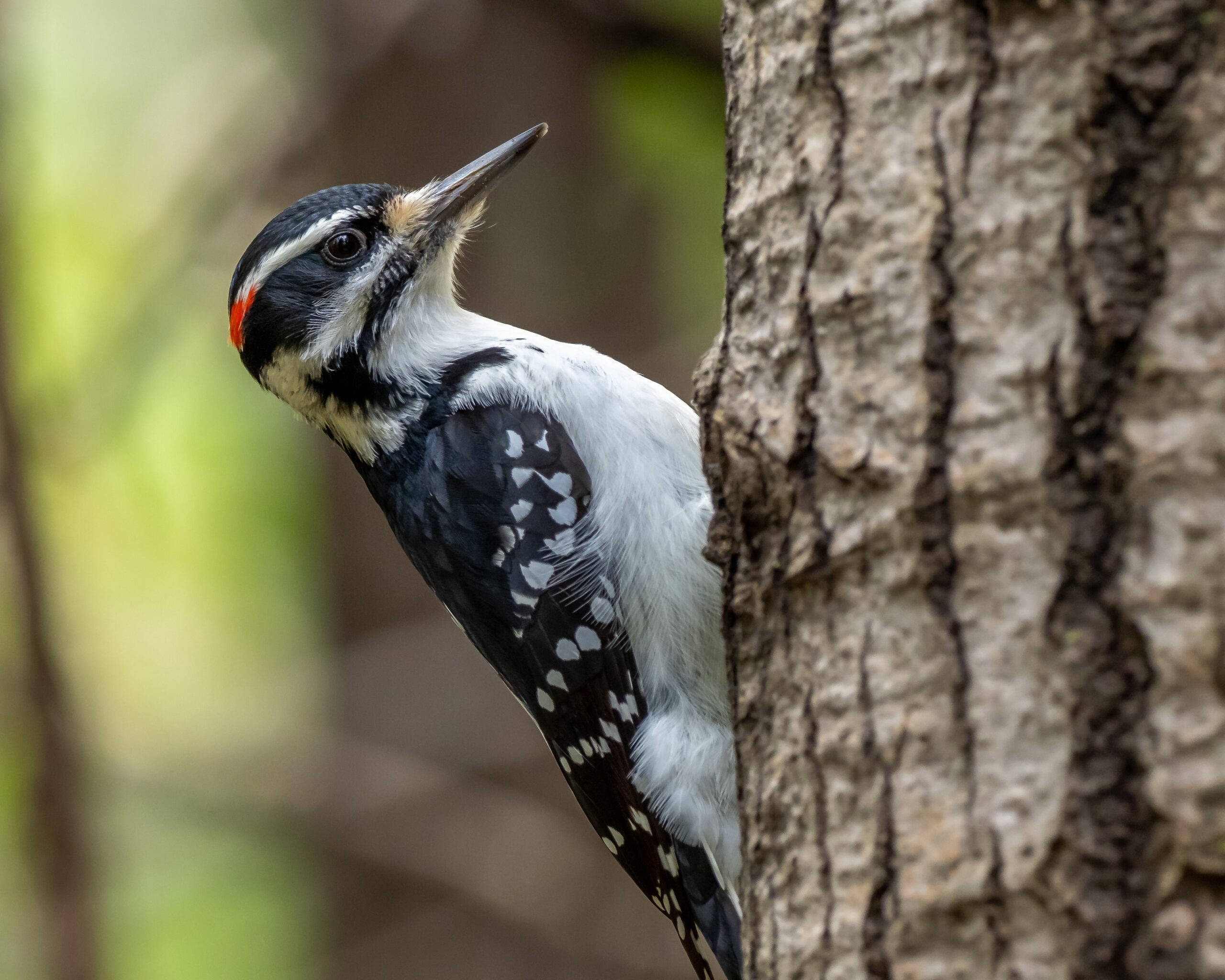Have you ever come across a bird with a peculiar name like the hairy woodpecker? This captivating creature, scientifically known as Picoides villosus, is a common sight in many forests across North America.
With its distinctive appearance and intriguing behaviors, the hairy woodpecker never fails to catch the attention of bird enthusiasts and nature lovers alike.
How to Identify a Hairy Woodpecker
If you’re wondering how to spot a hairy woodpecker in the wild, keep an eye out for some key identifying features. These charismatic birds measure around nine to ten inches in length, making them similar in size to a small-to-medium-sized songbird.
Their plumage consists of black and white patterns, with the males boasting an additional touch of red on the back of their heads.
When observing a hairy woodpecker, pay attention to its long, sturdy bill designed for drilling into tree trunks in search of insects. This impressive tool is essential for their survival and is a defining characteristic of the species.
Additionally, their stiff, pointed tail feathers help provide balance while perched on tree trunks or branches.
Hairy Woodpecker Traits
Now that we’ve covered the basics of identification, let’s dive deeper into the traits that make the hairy woodpecker so remarkable.
Behavior
Hairy woodpeckers are known for their energetic and busy nature. They spend much of their time hammering away at tree trunks, using their bills to chisel out insect meals from beneath the bark.
These drumming sounds can resonate through the forest, acting as both a territorial declaration and a means of communication with other woodpeckers.
Feeding
Speaking of meals, the hairy woodpecker has a diverse palate. While they primarily feed on insects, their diet can extend to include nuts, seeds, and even small fruits. You might spot them extracting ants, beetles, or larvae from trees, showcasing their adept foraging skills. Their constant search for sustenance is essential to maintaining their energy levels and survival in their woodland habitats.
Eggs
During the breeding season, which typically occurs between April and June, the female hairy woodpecker carefully selects a suitable tree cavity for nesting. After constructing a cozy bed of wood chips at the base, she lays a clutch of three to six pure white eggs. Both parents take turns incubating the eggs, ensuring their warmth and protection until they hatch.
Young
Once the eggs hatch, the young hairy woodpeckers enter the world as helpless hatchlings. The parents tirelessly provide food and care, ensuring their offspring’s growth and development. As the fledglings mature, they gradually acquire the striking black and white plumage, mirroring their parents’ appearance. Eventually, they become independent and venture out into the world on their own.
Diet and Nesting Habits
Let’s now delve into the specifics of the hairy woodpecker’s diet and nesting habits, shedding light on their unique behaviors.
Diet
As mentioned earlier, the hairy woodpecker’s diet primarily revolves around insects, which they skillfully extract from trees using their sharp bills.
Their foraging technique involves tapping on tree trunks and listening for the vibrations that indicate the presence of hidden insects. This remarkable ability allows them to locate their prey without relying solely on visual cues.
In addition to insects, hairy woodpeckers incorporate seeds, nuts, and berries into their diet. They may visit backyard bird feeders, eagerly pecking at suet or seeds, offering bird enthusiasts an opportunity to observe these delightful creatures up close.
Nesting
When it comes to nesting, hairy woodpeckers prefer excavating cavities in dead or decaying trees. They meticulously create their cozy homes, removing wood chips with their bills and shaping a comfortable space for raising their young.
These cavities also provide protection from predators and harsh weather conditions.
Hairy woodpeckers are known to reuse their nest sites, often modifying and expanding them in subsequent years. This behavior contributes to the maintenance and sustainability of their populations, ensuring their continued presence in their forest habitats.
Male vs Female Hairy Woodpeckers
Although male and female hairy woodpeckers share many similarities, some subtle differences can help distinguish between the sexes.
Male hairy woodpeckers showcase a small patch of bright red plumage on the back of their heads. This feature acts as a visual cue during courtship displays and helps establish territorial boundaries. Female hairy woodpeckers lack this red patch, featuring a more uniformly black and white appearance.
Final Thoughts
The hairy woodpecker, with its captivating appearance and engaging behaviors, holds a special place in the avian world. From their drumming sounds echoing through the forest to their adept foraging skills and diligent nest-building, these birds exemplify nature’s ingenuity.

